
Perfectly placed along the Earth’s center, Ecuador’s geographical location alone would already make you scratch your head in wonder. Surrounded by the Amazon as well as the Andean highlands, Ecuador boasts a natural miracle of its own with the Galapagos Islands. The archipelago alone holds an abundance of native species. Aside from rich natural resources, Ecuador also holds centuries’ worth of heritage tracing back to the earliest South American settlements. Uncover this country‘s culture for yourself with these Ecuador facts.
- Ecuador lies in northwestern South America.
- Currently, Ecuador has a population of more than 17 million.
- Ecuador’s area code is +593.
- Spanish is its official language.
- Quito is the capital of Ecuador with a population of almost 2 million.
- The country’s estimated gross domestic product for the year 2020 is nearly $100 billion.
- Ecuador’s land area is 283,560 km². It’s just a little smaller compared to the state of Arizona.
- Juan José Flores was the first constitutional president of the country.
- Salve, Oh Patria is the national anthem of Ecuador.
- Antonio José de Sucre is Ecuador’s national hero.
- The country declared its independence from Spain on August 10, 1809.
- The citizens of Ecuador are called ‘Ecuadorians.’
- Ecuador’s motto is, “God, homeland and liberty.”
- Ecuavóley, a form of volleyball invented by Ecuadorians, is the country’s national sport.
- Its national colors are yellow, blue, and red.
- Guayaquil is the most populated city in Ecuador with almost 3 million residents.
- Guinea pigs are served as a delicacy in Ecuador.
- Ecuador’s driving side is on the right.
- Ecuador is the 7th largest producer of cocoa in the world.
- Ecuador only has a few straight roads.
Ecuador Facts Infographics
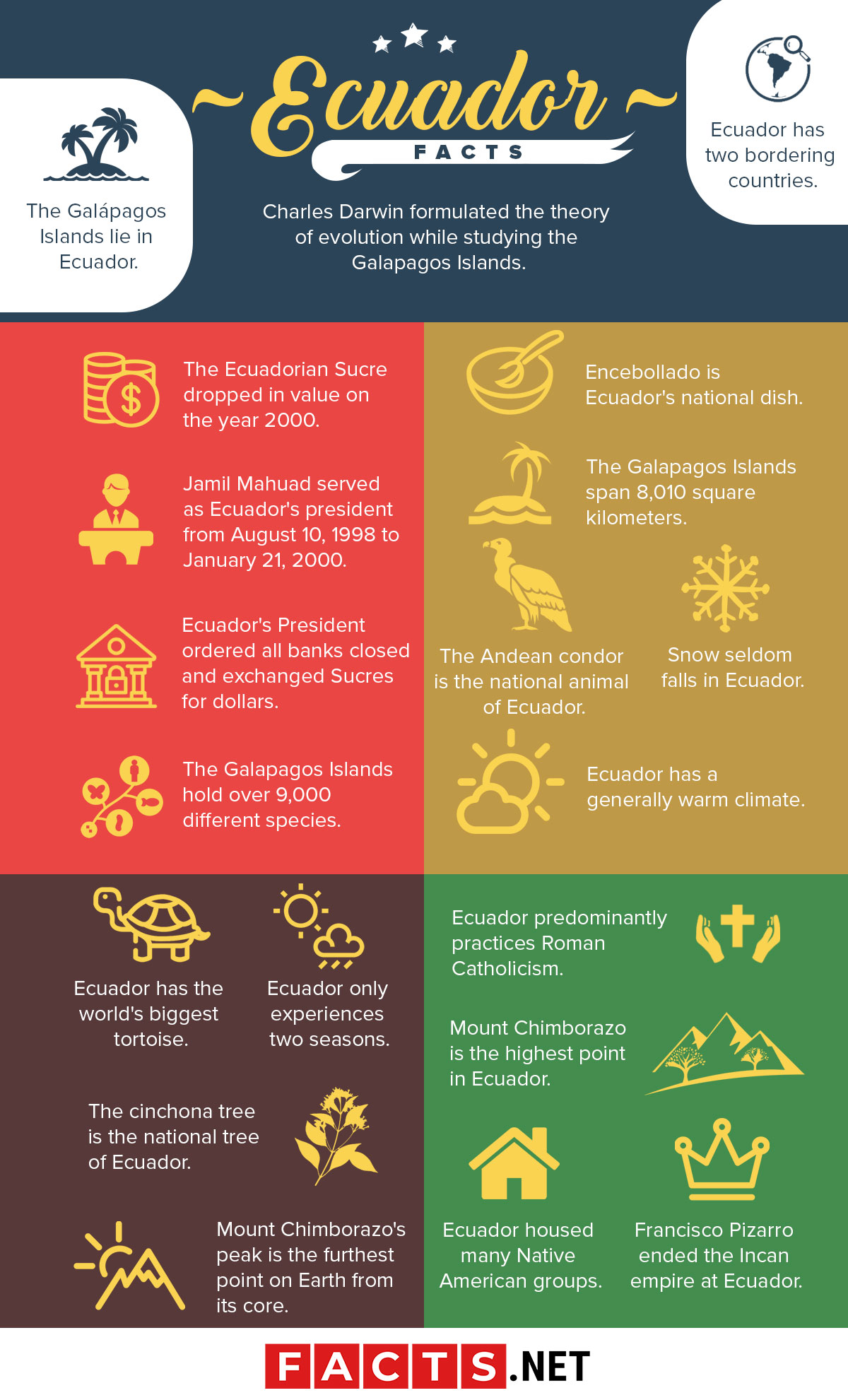
The Ecuadorian Sucre dropped in value on the year 2000.
Ecuador changed its currency from Sucre to the US dollar because their local currency lost most of its value in the year 2000. In just a month, sucres’ value dropped from 25,000 Sucres for $1 to 90,000 Sucres for $1. By September 11th, 2000, sucres officially ceased circulation as money.
Ecuador's President ordered all banks closed and exchanged Sucres for dollars.
During the instability of the Ecuadorian Sucre, the citizens worried that their banks would go bankrupt. As a result, the country experienced massive bank withdrawals, which impacted the economy and greatly fueled the downfall of most banks in 1998. As a result, Ecuador’s President Jamil Mahuad had to order all banks closed and changed Sucres for dollars.
Jamil Mahuad served as Ecuador's president from August 10, 1998 to January 21, 2000.
The former president of Ecuador, Jamil Mahuad, was born in Loja, Ecuador on July 29th, 1949. Although his presidency was filled with controversy, one of his most noteworthy feats was signing a historic peace agreement with Peru, resolving long-standing border disputes.
Serving a relatively short term as a president, Mahuad resigned after a week of demonstrations led by indigenous Ecuadorians as well as the military revolt headed by Lucio Gutiérrez.
Encebollado is Ecuador's national dish.
In terms of cooking, Encebollado is regarded as Ecuador’s national dish. The dish is a fish stew (usually tuna, albacore, billfish, or bonito) served with boiled cassava and pickled red onion rings and ripe avocado.
The Galápagos Islands lie in Ecuador.
The Galapagos Islands make up a significant part of Ecuador’s archipelago, found 1,000 kilometers west of the mainland.
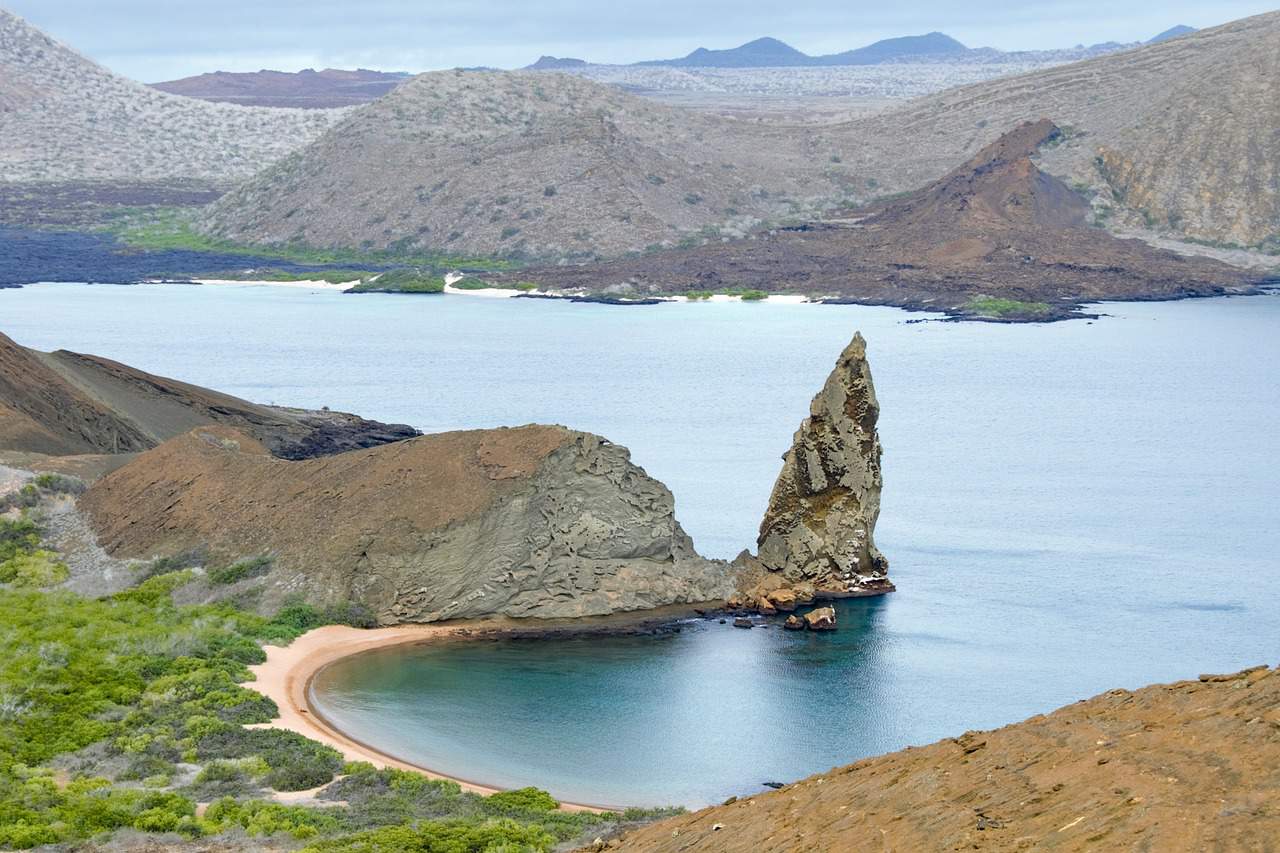
Ecuador has two bordering countries.
Ecuador borders Peru from the south and the east with Columbia to its north. Furthermore, the Pacific Ocean lies on the west side of Ecuador.
Charles Darwin formulated the theory of evolution while studying the Galapagos Islands.
Throughout his 5-year voyage on the HMS Beagle, Charles Darwin spent 5 weeks at the Galapagos Islands. However, he left the islands with a discovery that would last a lifetime. While observing the island’s flora and fauna, Darwin noticed differences in the local birds’ beaks depending on the environment and food source of each island.
Later on, the English naturalist used these findings as a basis for the theory of evolution presented in ‘On the Origin of the Species.’ Definitely one of the cooler Ecuador facts.
The Galapagos Islands hold over 9,000 different species.
With its collection of around 20 islands and islets, the Galapagos Islands count among the world’s most unique destinations. In total, the Galapagos Islands house more than 9,000 different species, with many of those species native to the islands.
The Galapagos Islands span 8,010 square kilometers.
Around 95% of its land is a national park or inhabited by the wild. In comparison, the island’s residential area only takes up a small portion of this land, housing a population of 30,000 people. Currently, the Galapagos charges tourists with a $100 entrance fee to the Galapagos National Park.
Ecuador has the world's biggest tortoise.
True to its namesake, the Galápagos tortoise serves as the “signature animal” of the archipelago. The Galápagos tortoise is the biggest living species of tortoise. weighing more than 900 pounds on average with a height of 5 feet.
Although 15 species have been identified within the island, 4 species have gone extinct, while the IUCN classifies the others as vulnerable or threatened.
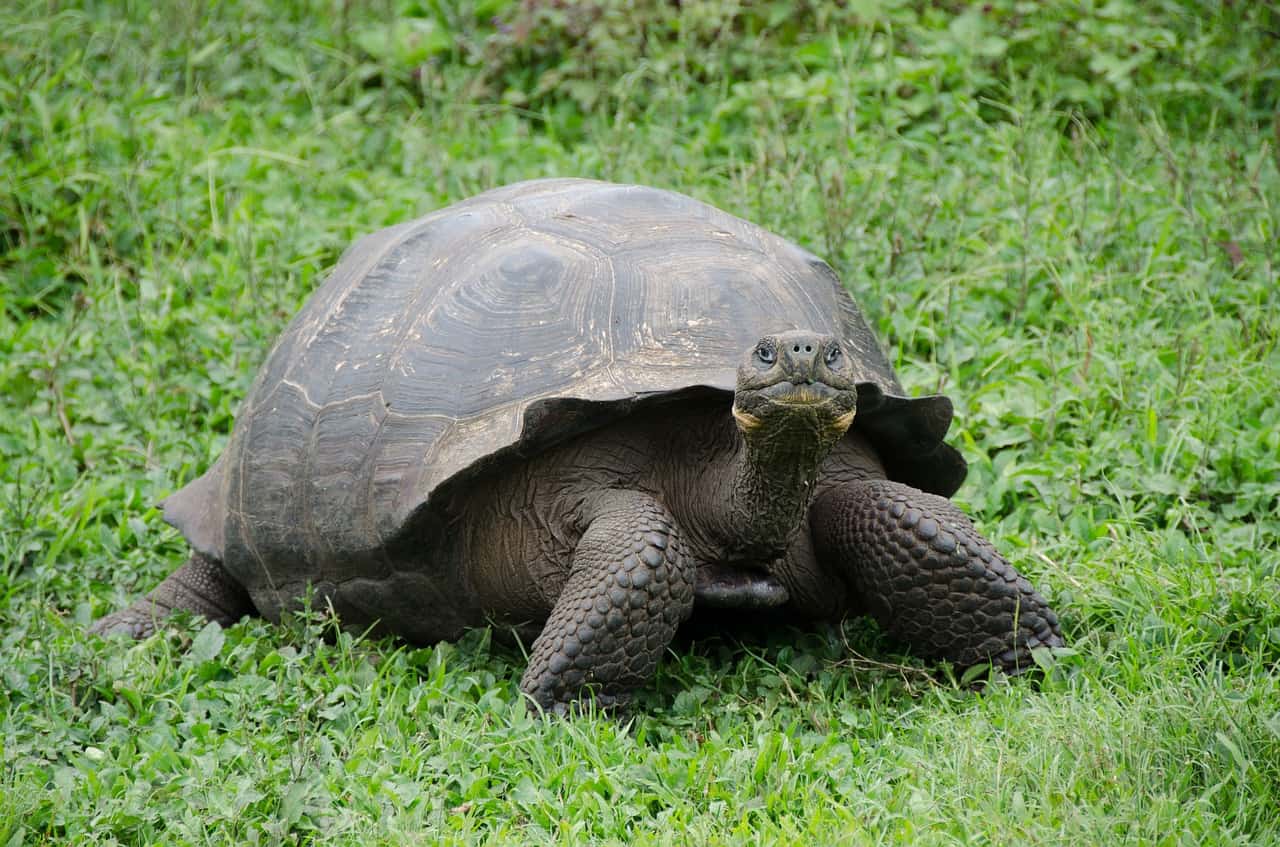
The cinchona tree is the national tree of Ecuador.
This tree is a flowering plant with 23 varieties of shrubs and trees. At its peak, it can reach heights of 50 feet. The cinchina tree’s bark produces ‘quinine,’ which became the world’s first cure for malaria.
Some believed that it could also heal leg cramps, promotes the release of digestive enzymes, increase appetite, treat bloating, and other stomach problems.
The Andean condor is the national animal of Ecuador.
Belonging to the vulture family, the Andean condor has represented Ecuador as its national animal since 1958. With the average weight of 7-5 kilograms and a wingspan ranging from 8-10 ft, they are the largest flying bird in the animal kingdom. Definitely one for amazing Ecuador facts.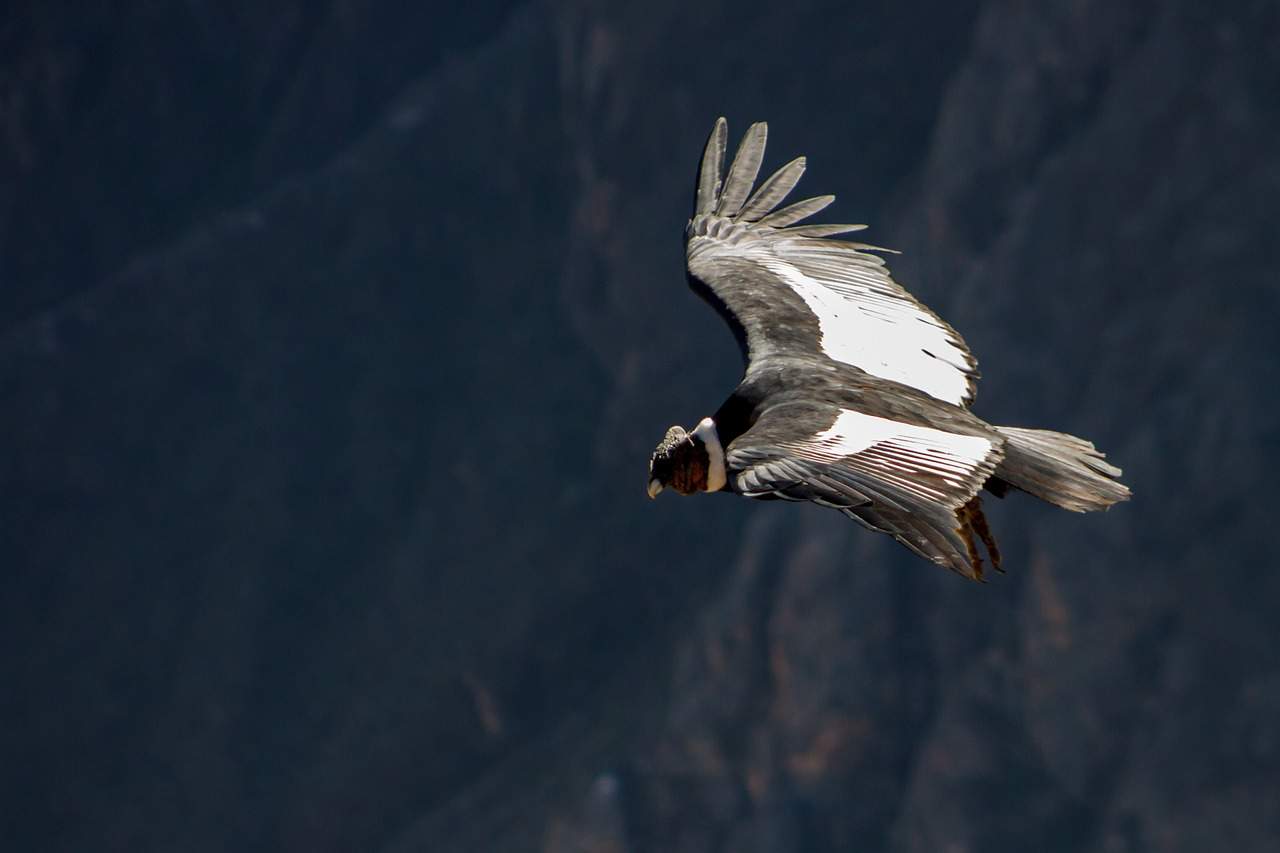
Photo from Pixabay
Ecuador predominantly practices Roman Catholicism.
Like most countries with a history of Spanish occupation, 77% of Ecuadorians practice Catholicism, followed by Protestantism at 14%. Meanwhile, 7% have no religious affiliation, and other religions only comprise 2% of the country’s demographic.
Ecuador only experiences two seasons.
Ecuador’s winter season lasts from June to September, while summers last from October to May. Since most of Ecuador lies in the Earth‘s southern hemisphere, it experiences mostly dry winters.
Ecuador has a generally warm climate.
Generally, Ecuador’s coastal lowlands experience warm weather around 25°C. Annually, Ecuador has an average temperature of 17.8°C. Definitely one of the warmer Ecuador facts.
Snow seldom falls in Ecuador.
Although Ecuador has a winter season, it rarely experiences snowfall – even for its high-altitude places. The snow-capped peaks of the Chimborazo are the only exception, which remains covered in snow throughout the year.
Mount Chimborazo is the highest point in Ecuador.
The Chimborazo is the highest mountain in Ecuador. Peaking at 6,263 meters, it stands only 2,585 short of Mount Everest. More surprisingly, Mount Chimborazo os actually an inactive volcano with its last eruption occurring around 550 A.D.
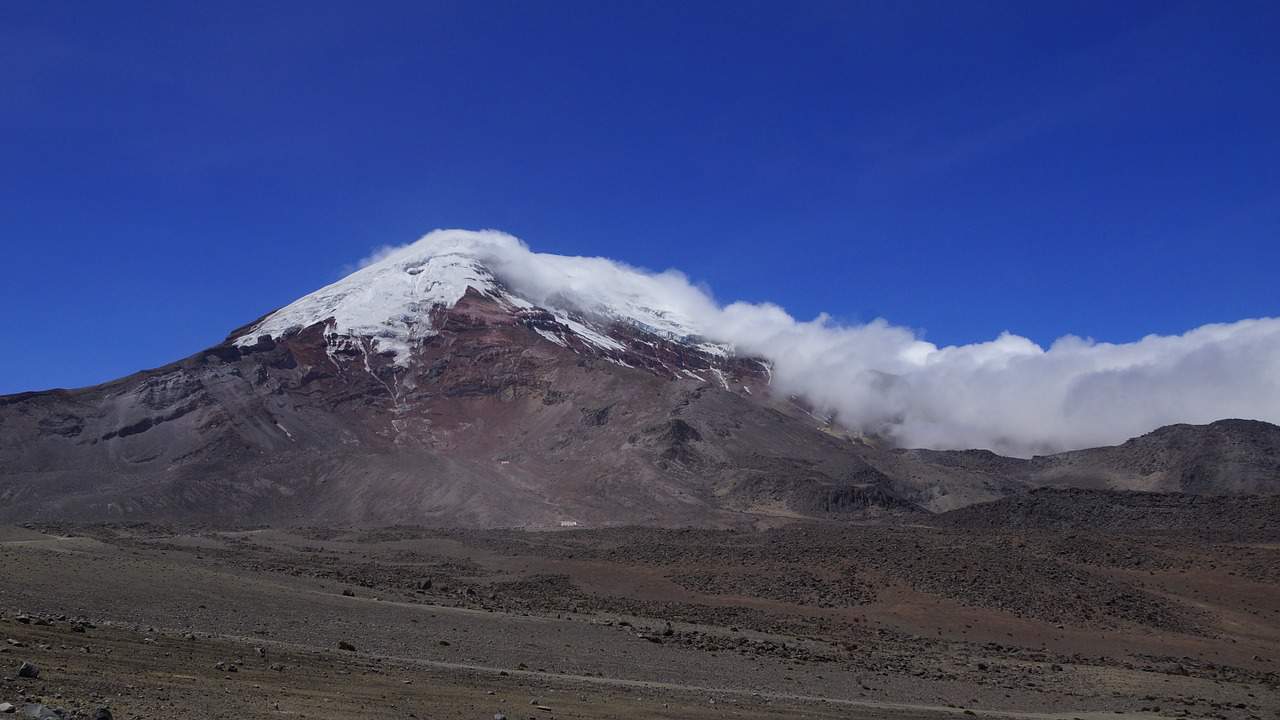
Mount Chimborazo's peak is the furthest point on Earth from its core.
It may not be the highest summit in the world, but the Chimborazo achieves another extreme feat by reaching the farthest distance from the Earth’s core. The Chimborazo’s position delicately places it along the Earth’s equatorial bulge, which is makes its peak the furthest point on Earth from its core. How’s that for neat Ecuador facts?
Ecuador housed many Native American groups.
During Ecuador’s early years, a variety of Amerindian or American Indian groups settled in its regions. In the 15th century, the Inca Empire entered Ecuador and slowly ushered in more civilizations.
Francisco Pizarro ended the Incan empire at Ecuador.
In 1531, Spanish conqueror Francisco Pizarro landed in Ecuador with his troops. When Pizarro learned of the civil war between locals and the Inca Empire as well as the diseases that plagued them, he took advantage of the settlement’s weakened state. In September 1532, the Spanish conqueror ended the reign of Atahualpa, the last ruler of the Incan empire.
Spain colonized Ecuador in the 16th century.
From the 16th century, Ecuador was placed under Spanish rule. It wasn’t until the year 1820 that Ecuador achieved independence as a part of Gran Colombia (known as Colombia today). From there, Ecuador emerged as a sovereign state 10 years later.
Ecuador got its name after the equator.
Ecuador is named after the imaginary line that divides the Earth’s northern and southern hemispheres. In fact, the name borrows from the Spanish “El Ecuador,” which directly translates to “The Equator.”
After the war for independence, they converted the name “El Ecuador” to “Republic of Ecuador.” To this day, it’s the only country in the world named after a geographical feature. Definitely one of the more interesting Ecuador facts.
Ecuador holds the world's first UNESCO World Heritage Site.
In 1978, the first UNESCO World Heritage conference released a list of 32 World Heritage Sites during their launch. Among this list, the Galapagos Islands appeared first, which essentially gives Ecuador the honor of being the first pick.
Ecuador is still a developing country.
Although rich in wildlife, Ecuador is a middle-income developing country that primarily relies on agricultural products, commodities, and petroleum.
Ecuador leads the world in banana exports.
With more than $3 billion in banana sales annually, Ecuador is the world’s top exporter of bananas. In total, Ecuador’s annual revenue represents a 22.6% share of the world’s total banana exports. This is followed by the Philippines at second place with 13.2%, and Columbia with 11%.
It is one of the only two countries in South America that don't share borders with Brazil.
All countries in South America share borders with Brazil, except for Ecuador and Chile. As coastal regions, they sit far from the biggest country in South America.
Ecuador is home to the "mutable rain frog."
In 2009, scientists discovered a unique frog species known as the “mutable rain frog” or “punk rocker” in the rainforests of Ecuador. This native Ecuadorian species is unique for its ability to change its smooth skin into a spiky exterior in seconds.
Since its discovery, the mutable rain frog remains as the only vertebrate that can change its skin texture.
Ecuador's economy started to rise in 2006.
Despite being a developing country, Ecuador managed to decrease its poverty line from 2006 to 2016. Throughout this period, the country’s poverty rate declined from 36.7% to 22.5%, while its annual Gross Domestic Product per capita rose gradually.
Similarly, Ecuador’s Gini index decreased from 0.55 to 0.47, which indicates a significant decrease in economic inequality .
Ecuador has a low homicide rate.
In general, Ecuador ranks fifth in the lowest homicide rate in the Americas. However, the country still regularly experiences minor crimes such as pickpocketing, like other places in the world.
Ecuador has a multi-party political system.
In terms of political structure, the president of Ecuador commands a cabinet with executive power. Moreover, the president serves as both the head of the state and the head of the army. Ecuador’s central government constitution imposes a unicameral representative democracy with a four-year term presidential election.
Ecuador has over 10 indigenous people groups.
Ecuador houses many indigenous peoples such as the Tsáchila of Santo Domingo, and the Chachi of the western Ecuador’s coastal lowlands. Aside from the Shuar people, Ecuador’s other indigenous groups include: Achuar, Shiwiar, Zápara, Secoya, Waorani, Cofán, Siona, Epera, Quichua, and the Awá-Cuaiquer.
Ecuador had a persistent border dispute with Peru.
For decades, Ecuador and Peru disputed where their border should be drawn. In 1941, the conflict ceased through the Rio Protocol, which mandated peace between Ecuador and Peru. However, the conflict sparked started again in 1981 and 1995. Finally, the conflict ended in 1999 after a demarcation was signed by both countries’ governments.
Ecuador runs a portion of Peruvian territory.
Throughout the border dispute between Ecuador and Peru, one odd condition was arranged. Ecuador bargained to have a permanent lease of one square kilometer of Peru. As a result, Ecuador settled a military base in Peruvian territory that it governs to this day.
Ecuador was once part of Venezuela and Colombia.
From the year 1822 to 1830, Ecuador was part of the nation of Gran Colombia, along with Venezuela and Colombia. After Ecuador gained independence from Spain, Ecuador merged with Gran Colombia. However, the alliance did not work out, with Ecuador separating and becoming a Republic in 1830.
The famous Panama Hat actually originated from Ecuador.
The Panama hat gained popularity when former president Theodore Roosevelt and his delegates wore them upon their return to the US. However, one of the little-known Ecuador facts is that despite the name, the famed Panama hats actually came from Ecuador.
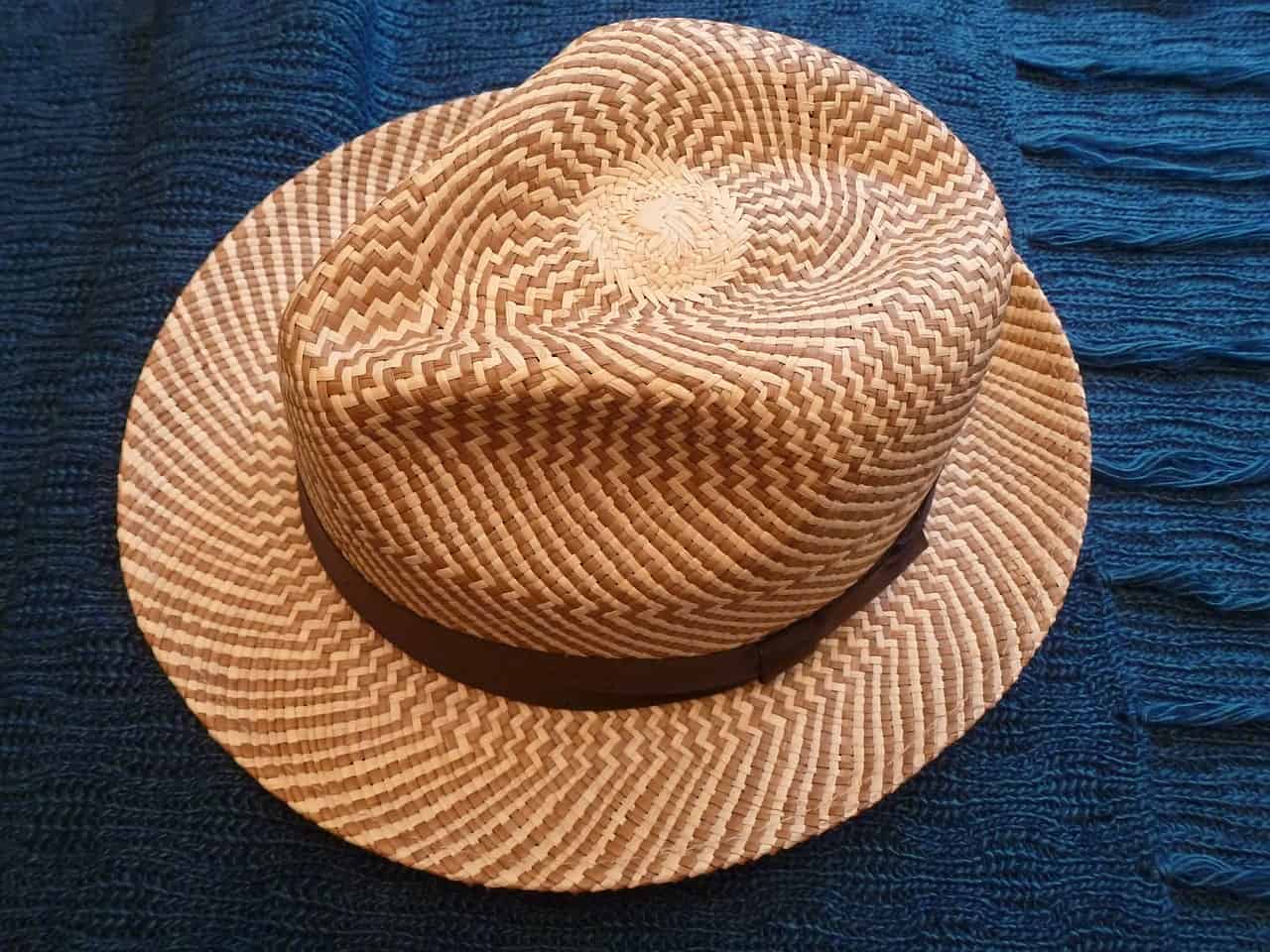
The cities of Montecristi and Cuenca mass-produced Panama hats.
Ecuadorian locals from the cities of Montecristi and Cuenca mass-produced these hand-woven Panama hats. Despite their place of origin, the hats were named after Panama due to the country’s huge volume of imports from Ecuador in the 19th century.
Ecuador uses 10 different languages.
Although Spanish is the national language of Ecuador, the country still uses 10 native languages such as Quichua, an Inca language spoken by the indigenous people of South America.
Ecuador elected Rosalia Arteaga as its first female president in 1997.
In 1996, Rosalia Arteaga served as Abdala Bucaran’s vice president. On the 6th of February 1997, Ecuador’s Congress dismissed President Abdala Bucaran. Amidst the dispute for the assumption of the president’s position, Congressional Leader Fabian Alarcon took charge on the same day.
However, Arteaga opposed his rule, knowing that she was supposed to be next in line. Arteaga successfully assumed presidency on February 9th, 1997, which also marked the country’s first female leader.
Rosalia Arteaga served as president for only two days.
Two days after she assumed office, Congressional Leader Fabian Alarcon attempted to swear into office once more. This time, he succeeded with the support of Congress and well as the army.
With that, Rosalia Arteaga was forced to resign. In 1998, she ran for presidency but only received 3% of votes. Definitely one of the Ecuador facts that show its eventful political history.
Ecuador's Yasuni Park is one of the most unique national parks in the world.
Found in the in Napo and Pastaza province of Ecuador, Yasuni Park is one of the most bio-diverse spots on Earth. Yasuni Park is a government-protected Ecuadorian National Park, housing many endemic species found nowhere else in the globe.
Yasuni Park also holds significant oil reserves.
Aside from Yasuni Park’s diverse ecology, it also holds an estimated 1.7 billion barrels of crude oil, which makes 40% of the country’s oil reserves.
Cacao may have originated from Ecuador.
For many centuries, Central and South America harvested cacao. Today, Ecuador ranks 7th in the world’s biggest producers of cacao. Hence, there’s no denying cacao’s significance to Ecuadorian heritage. However, some studies suggest that cacao may have actually originated from Ecuador 5,000 years ago.
Quito in Ecuador is the orchid capital of the world.
With many natural sanctuaries, Ecuador has over 4,000 species of plants. For Quito in particular, its abundance of orchids earned it the title “Capital of Orchids.” These charming flowers are planted all throughout the metropolitan area of Quito, including its city boundaries.
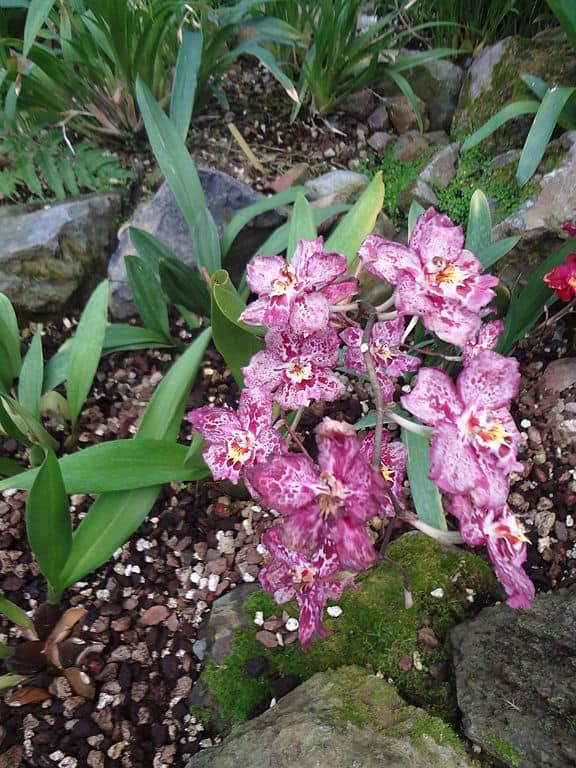
Quito's orchid conservatory covers roughly 800 square meters.
Quito Botanical Garden’s main attraction is its orchid conservatory, covering roughly 800 square meters devoted entirely to the growth of orchids. Technologically, it also utilizes an advanced greenhouse system which replicates a warm, moist “mini cloud” environment found in a forest.
Ecuador has well-preserved Spanish Colonial architecture.
Ecuador also exhibits some of the finest colonial architecture in the world especially in its bigger cities. Surviving many natural calamities, Ecuador has the best-preserved Spanish Colonial architecture in all of Latin America.
Ecuador has more birds than any other country.
On a per square meter basis, Ecuador has more birds than any other country in the world. Housing over 1600 different bird species, Ecuador is quite literally the bird watcher’s paradise. How’s that for cool Ecuador facts?
Ecuador has the most number of hummingbird species.
Ecuador also holds the world record for the most hummingbird species in the world. In total, 350 species of hummingbirds live exclusively in the Western Hemisphere. In Ecuador alone, the country holds more than 160 hummingbird species.
Football is the most popular sport in Ecuador.
Of all sports, football ranks as the most popular in Ecuador. Over 15 years now, Ecuador has been extensively involved in sports, consistently hosting the Guayaquil Marathon each year. The Guayaquil Marathon features 1,000 participants from Ecuador, Peru, Venezuela, and Colombia.
Sesame Street's Carlo Alban hails from Ecuador.
Carlo Alban played Carlo on Sesame Street from 1993 until 1998. Other famous Ecuadorians are footballer Christian Benítez, tennis champion Andrés Gómez, and philosopher Eugenio Espejo.
Guinea pig is a delicacy in Ecuador.
Aside from Ecuador’s Encebollado, other popular dishes in the country are Caldo De Gallina (chicken soup), Locro de papa (potato stew), Cuy Asado (roasted guinea pig), Churrasco Ecuatoriano (Ecuadorian grilled meat), and Ceviche de Camarón (raw shrimp cocktail).
Ecuador's national flag has three main colors.
Its main colors are red, blue, and yellow. The flag’s blue represents independence from Spain while the yellow commemorates the Federation of Greater Colombia. Finally, the red symbolizes courage and remembers lives lost during the nation’s fight for independence.
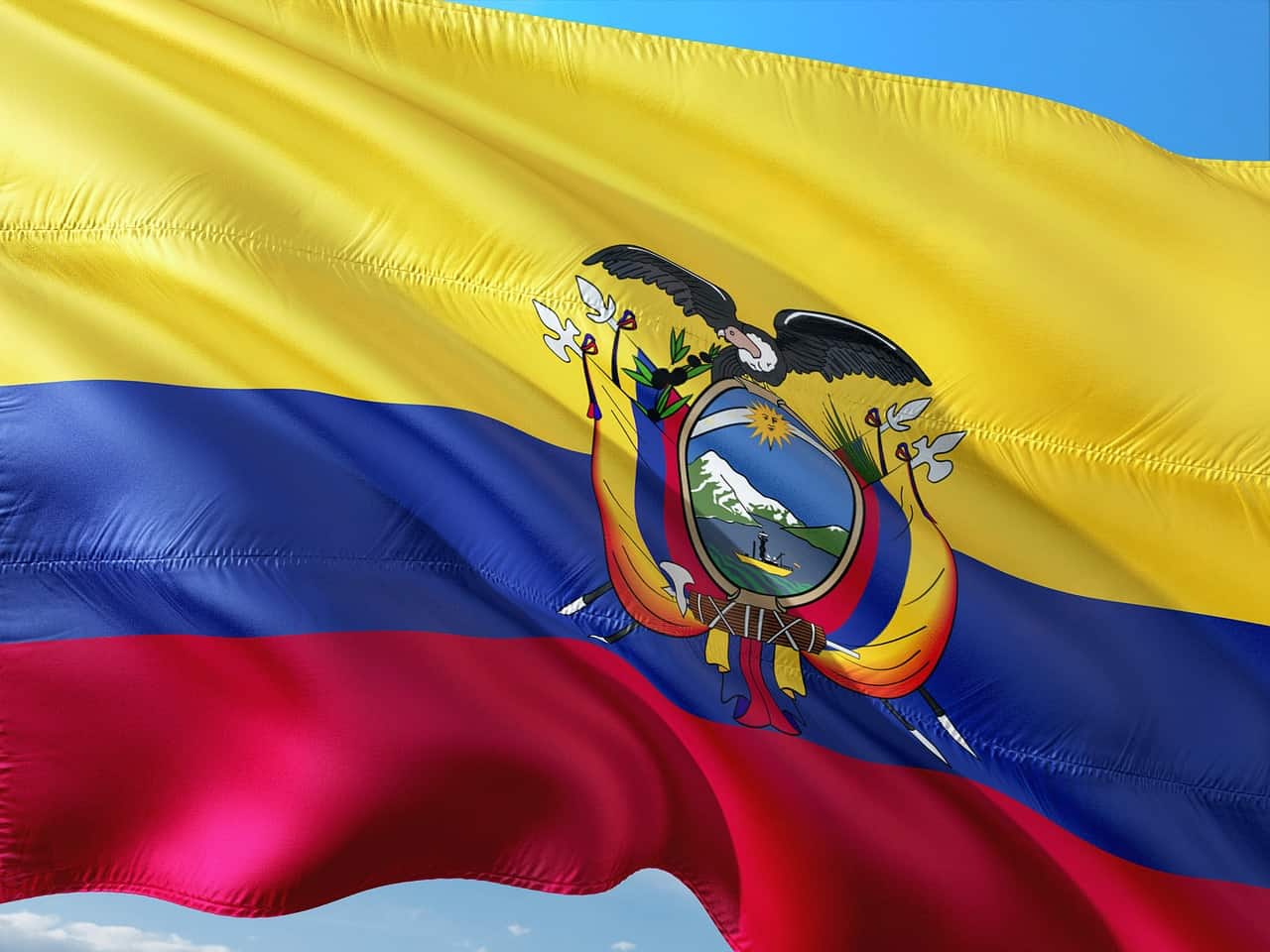
Ecuador, Venezuela, and Colombia's flag share a huge resemblance.
The Ecuador’s flag’s design is very much similar to Venezuela and Colombia due to their history as part of the former constituent territories of Gran Colombia.
You can distinguish Ecuador's flag by its Coat of Arms.
The main difference between Ecuador, Colombia, and Venezuela’s flag is that Ecuador’s flag has an icon of the Coat of Arms of Ecuador – an oval shield with a sun in its upper part and the historical Mount Chimborazo under it, with a river as a symbol of commerce and navigation.
Some people go to Ecuador to learn Spanish.
One of the reasons why people go to Ecuador is to learn how to speak Spanish. With Spanish as their main language, only 55% of Ecuador’s population can speak English proficiently.
There are 3 common misspellings of Ecuador.
Some of the common misspellings of Ecuador are “Equador,” “Ecuator,” and “Equator.”
Ecuador's life expectancy has steadily increased.
Not long ago, the average life expectancy in Ecuador was 71 years old. However, as of the year 2020, the current life expectancy in the country rose to 77.10 years. On top of that, Ecuador has been voted by many as one of the best places in the world to live in upon retirement.
Was this page helpful?
Our commitment to delivering trustworthy and engaging content is at the heart of what we do. Each fact on our site is contributed by real users like you, bringing a wealth of diverse insights and information. To ensure the highest standards of accuracy and reliability, our dedicated editors meticulously review each submission. This process guarantees that the facts we share are not only fascinating but also credible. Trust in our commitment to quality and authenticity as you explore and learn with us.
